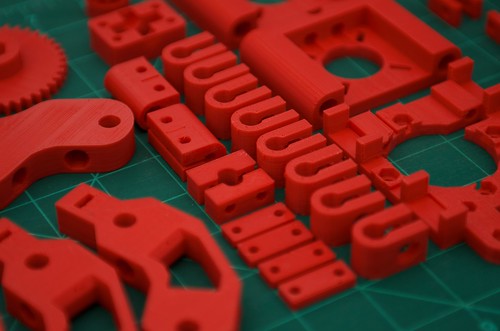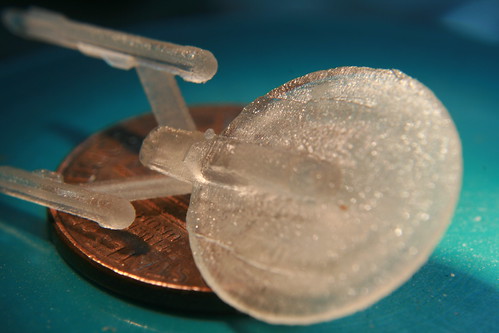3D plastic printing makes use of 3D plastic printers and materials belonging to three classifications of different plastics: resins, polyamides and ABS, for various processes ranging from plastic rapid prototyping to the 3D printing of the finished product with the technology employed depending on the plastics used: FDM, laser sintering or stereolithography.
ABS 3D printing
Acrylonitrile Butadiene Styrene is a thermoplastic commonly used in 3D printing, particularly for desktop 3D printers (ABS plastic 3D printers).
Possessing a rough surface and similarities to plastic in terms of texture, durability and functionality, it melts at approximately 200°C. It is resistant and is available in several colours. ABS 3D printing involves the use of ABS plastic 3D printers and is used to create objects for daily use such as toys (the famous toymaker Lego uses for its toy sets).
 source: John Biehler via Flickr
source: John Biehler via Flickr
###Buy ABS Filament
PLA 3D printing
PLA 3D printing makes use of PLA 3D printers and PLA filament (a thermoplastic polyester created from renewable resources using starch from sources such as corn, vegetable matter or goat’s milk). It is a highly popular choice amongst clients due to the fact that it is eco-friendly and biodegradable. It is less resistant than ABS and melts at 160°C. It is also sensitive to water. Processed by PLA 3D printers, PLA is used to create objects used for dining and culinary purposes (bowls, dishes, cups).
 source: Creative Tools via Flickr
source: Creative Tools via Flickr
###Buy PLA Filament
##3D Resin printing Resin is a material used in 3D printing processes employing Polyjet technologies and stereolithography. It is generally available in matte, brilliant, white and black.
##3D polyamide printing 3D polyamide printing is mainly used in laser sintering. Objects produced using this material used are stable, shock resistant, solid yet slightly flexible and may include dining and culinary objects as well as injection molds.
##3D printing using transparent plastic
Several manufacturers provide objects created by 3D printing using transparent plastic materials for uses in various fields such as dentistry (dental braces), the design industry (lighting objects : design lamps, glass). The most popular technologies used in 3D plastic printing include: laser sintering, stereolithography and polyjet printing technology with popular materials including Accura Peak 3D Systems and ABS Stratasys.
 source: ElDave via Flickr
source: ElDave via Flickr
